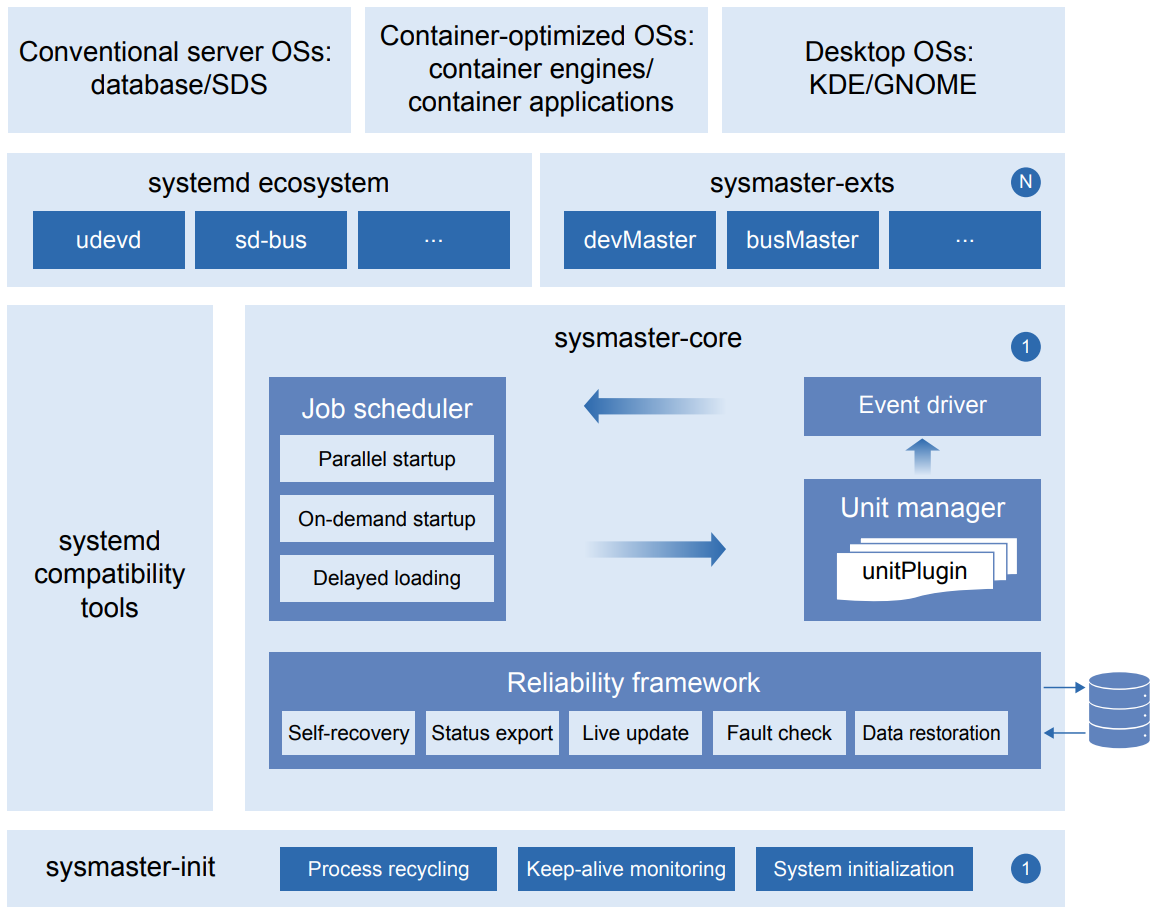sysMaster User Guide
Overview
sysMaster is a collection of ultra-lightweight and highly reliable service management programs. It provides an innovative implementation of PID 1 to replace the conventional init process. Written in Rust, sysMaster is equipped with fault monitoring, second-level self-recovery, and quick startup capabilities, which help improve OS reliability and service availability.
sysMaster manages processes, containers, and VMs centrally, and is ideal for server, cloud computing, and embedded scenarios.
sysMaster divides the functions of traditional PID 1 into a 1+1+N architecture based on application scenarios.
As shown in the figure, sysMaster consists of three components:
• sysmaster-init, a new implementation of PID 1, is applicable to embedded systems with functions such as system initialization, zombie process recycling, and keep-alive monitoring.
• sysmaster-core undertakes the core service management functions and incorporates the reliability framework to enable live updates and quick self-recovery in the event of crashes, ensuring 24/7 service availability.
• sysmaster-exts offers a collection of components (such as devMaster for device management and busMaster for bus communication) that deliver key system functions. You can choose the components to use as required.
Figure 1 sysMaster architecture
Currently, sysMaster consists of the sysmaster and devmaster services, which manages services and devices, respectively. Their functions will be described in the following sections.
Intended Audience
This document is intended for openEuler users who need to manage services and devices. Users must:
- Know basic Linux operations.
- Be familiar to configuration of services and devices.










